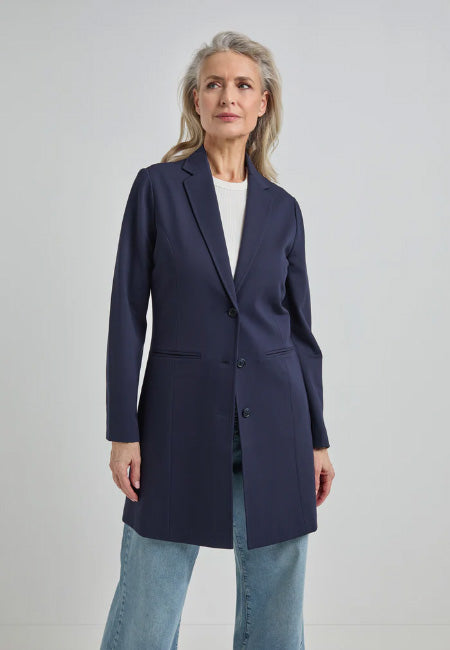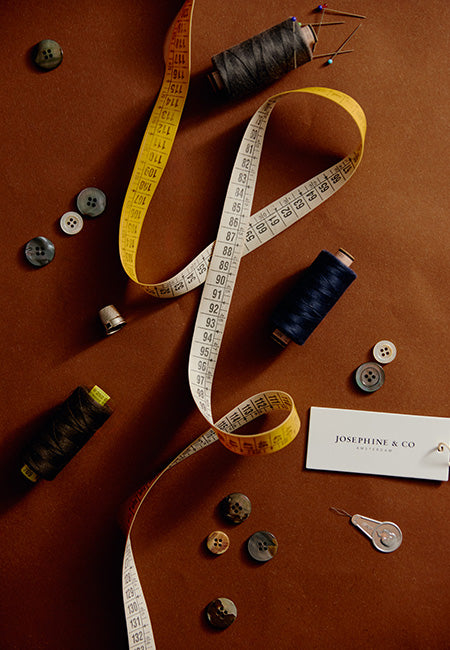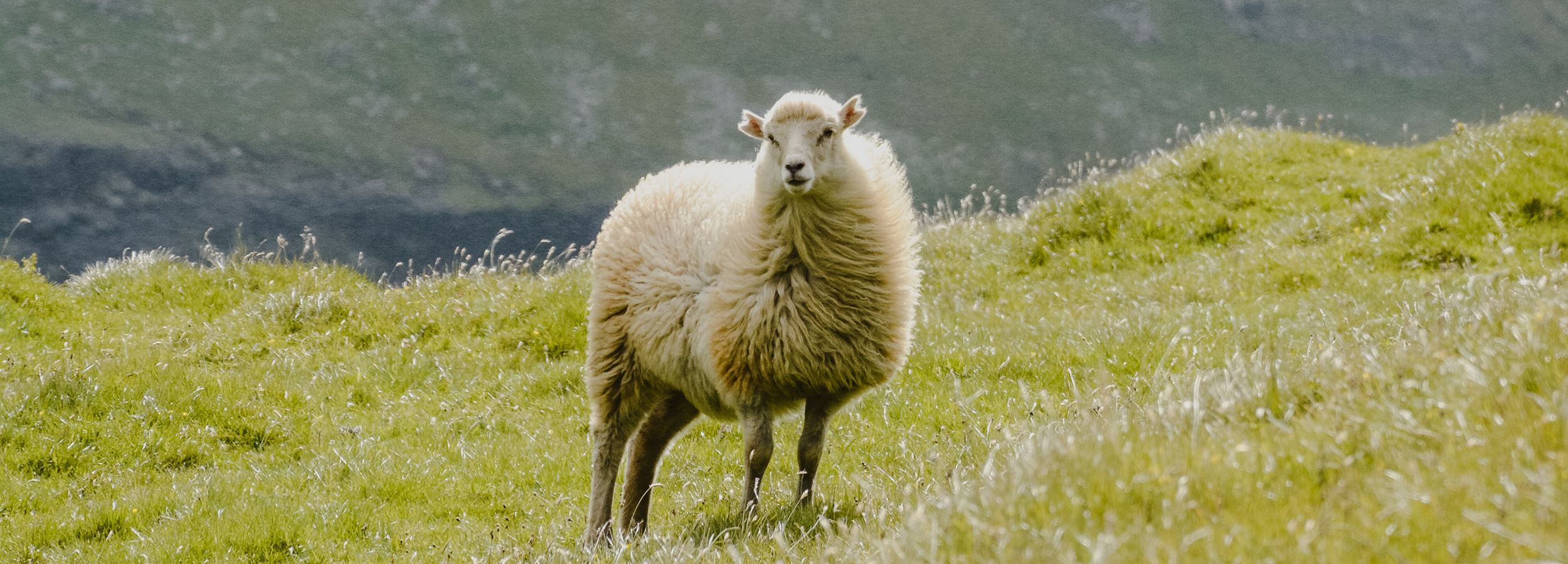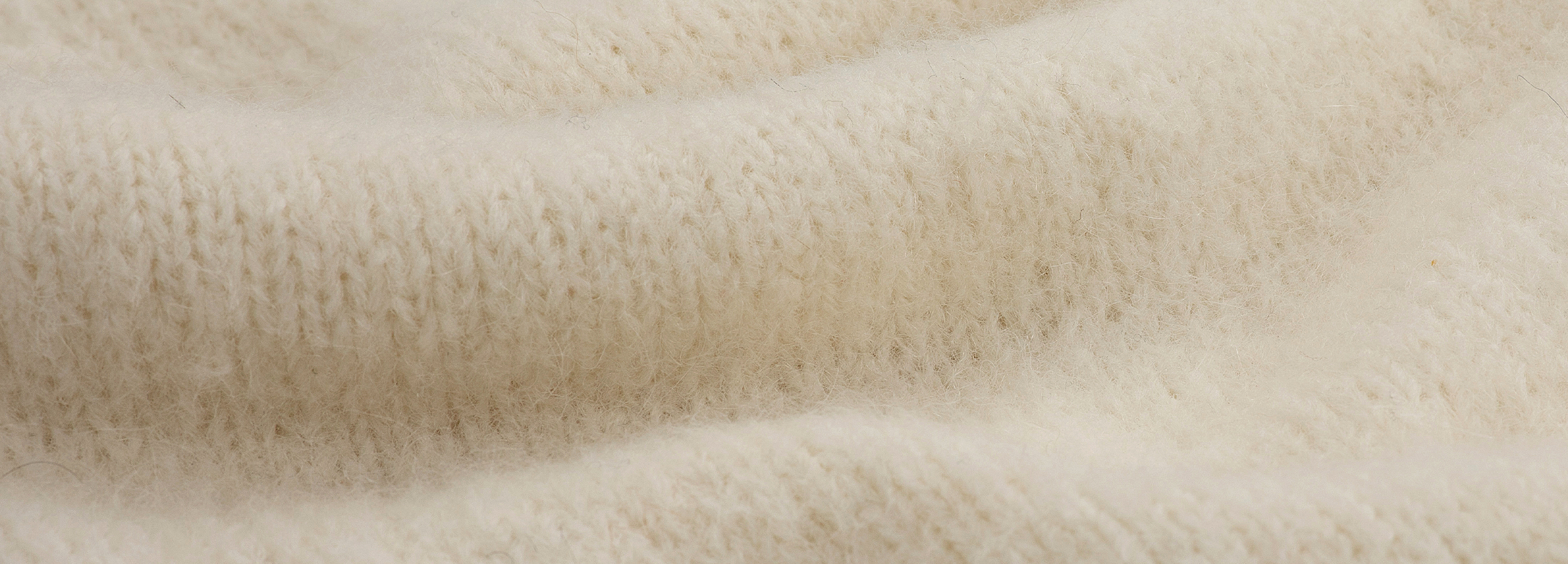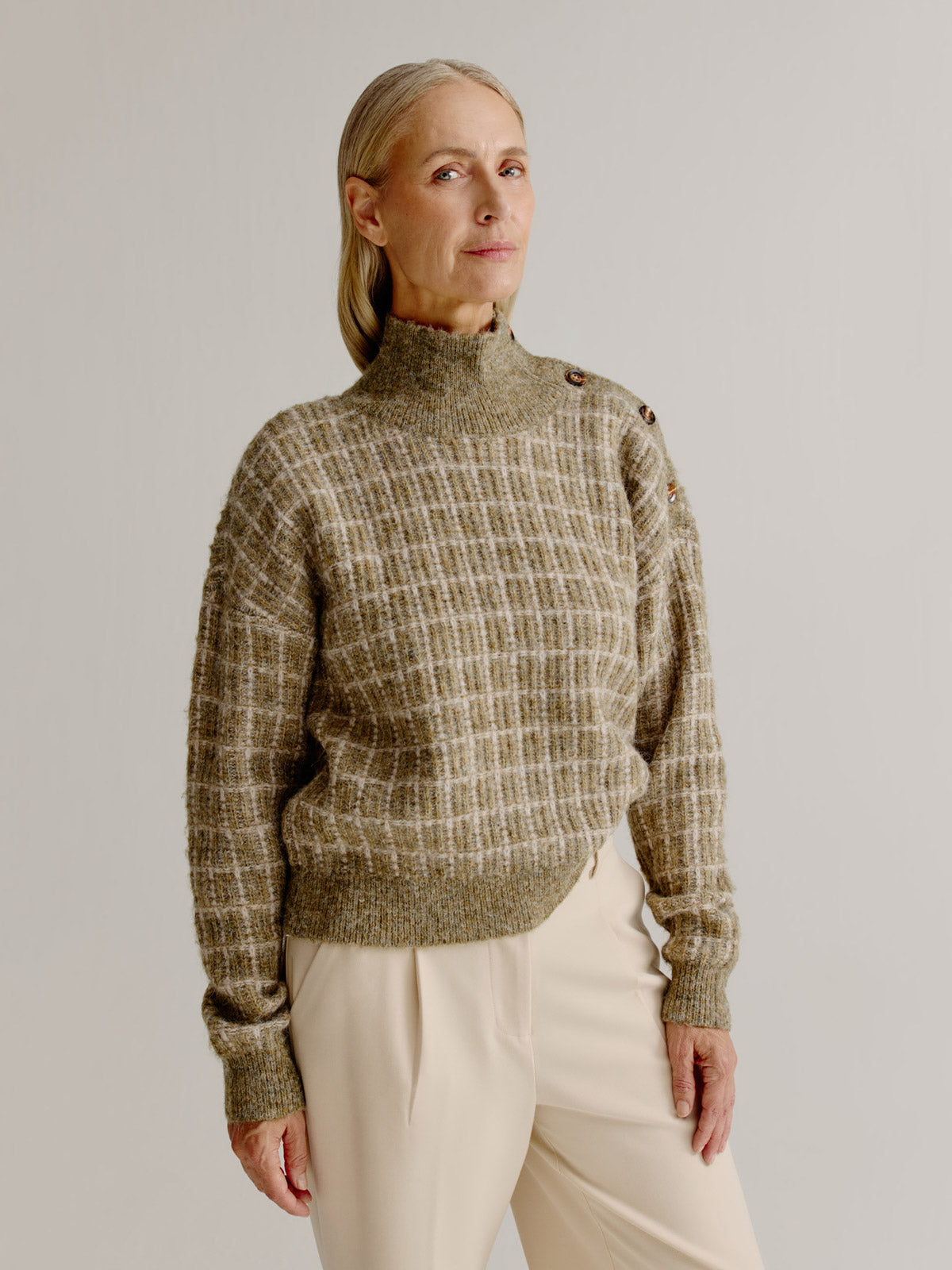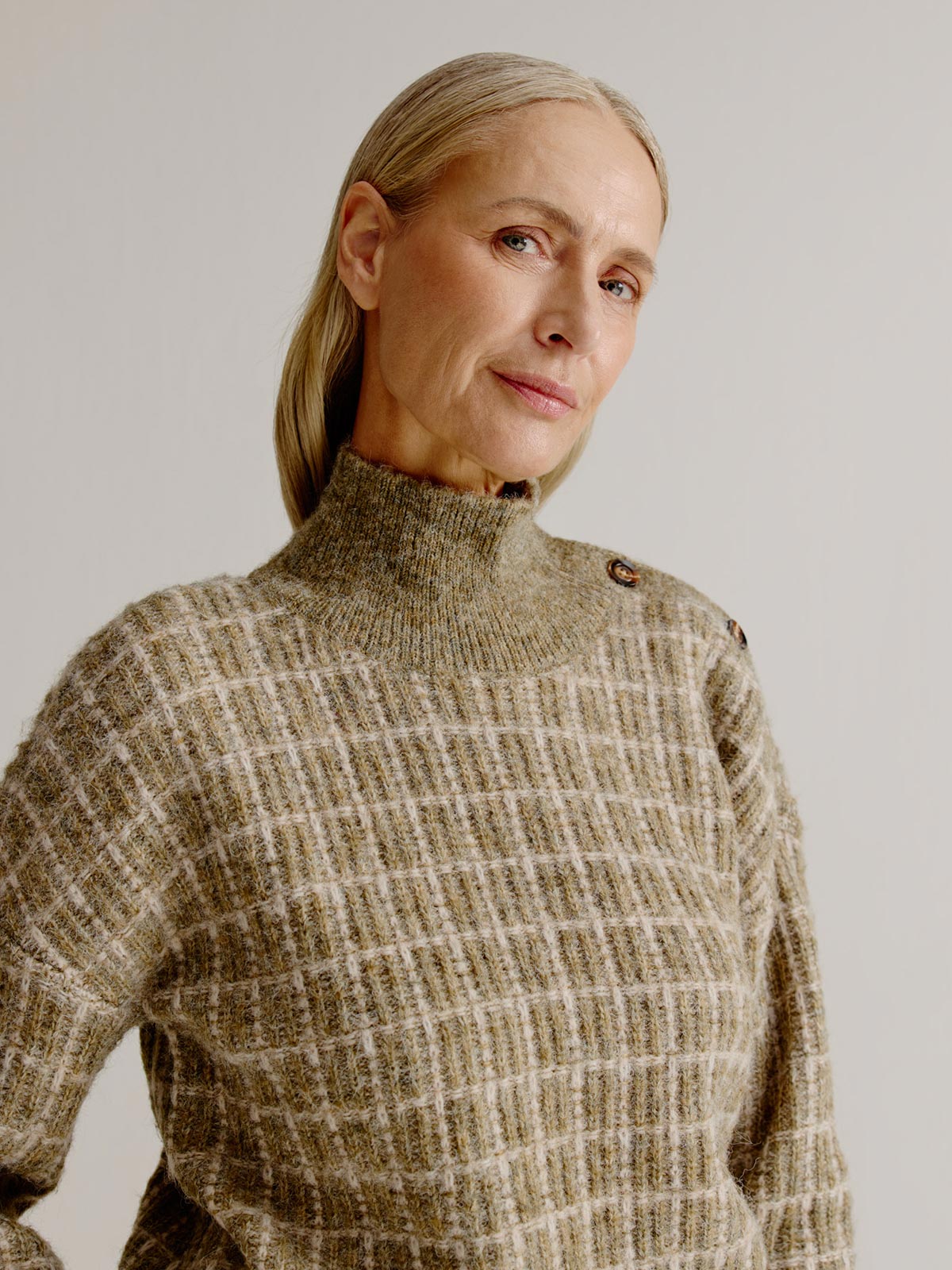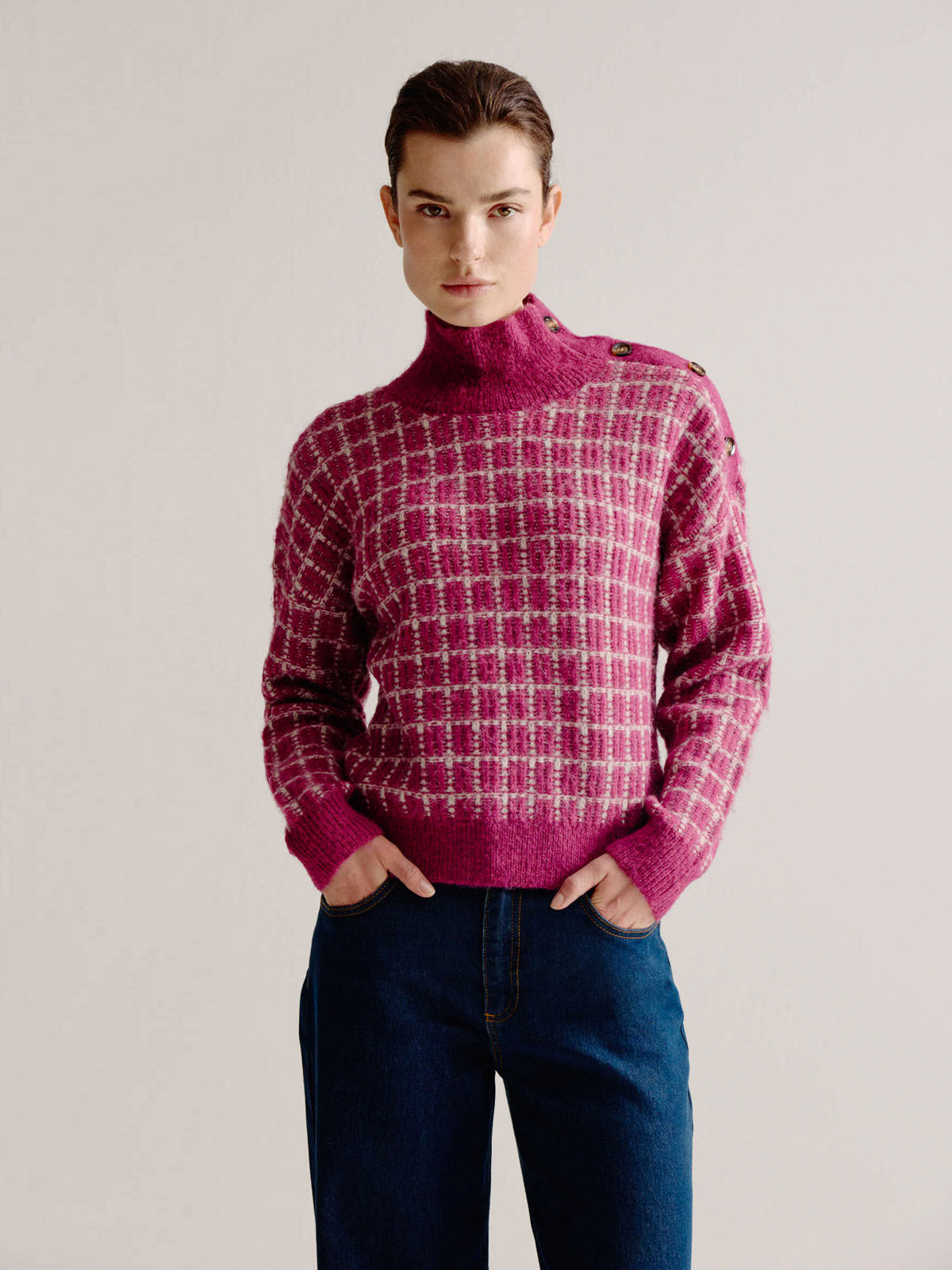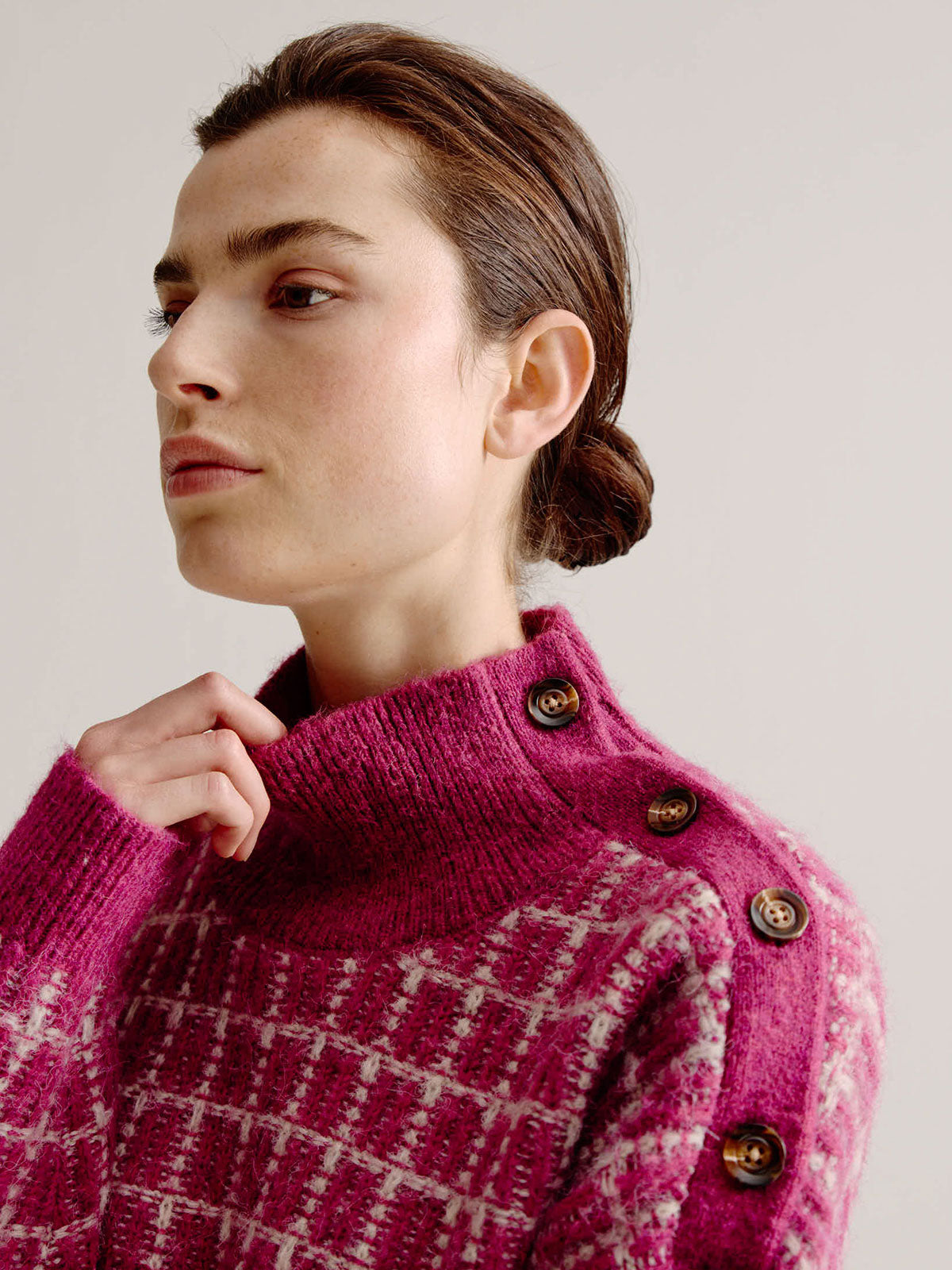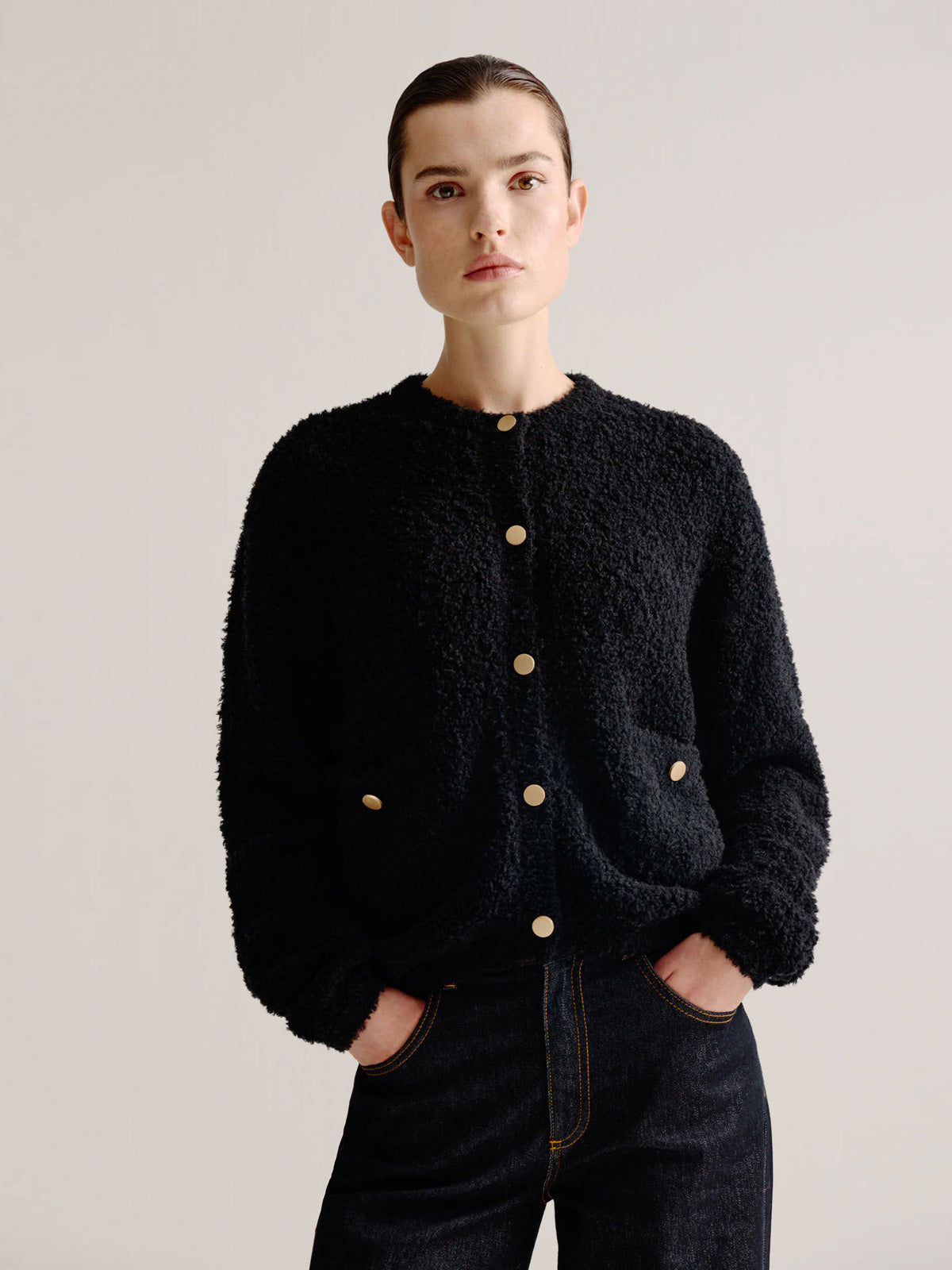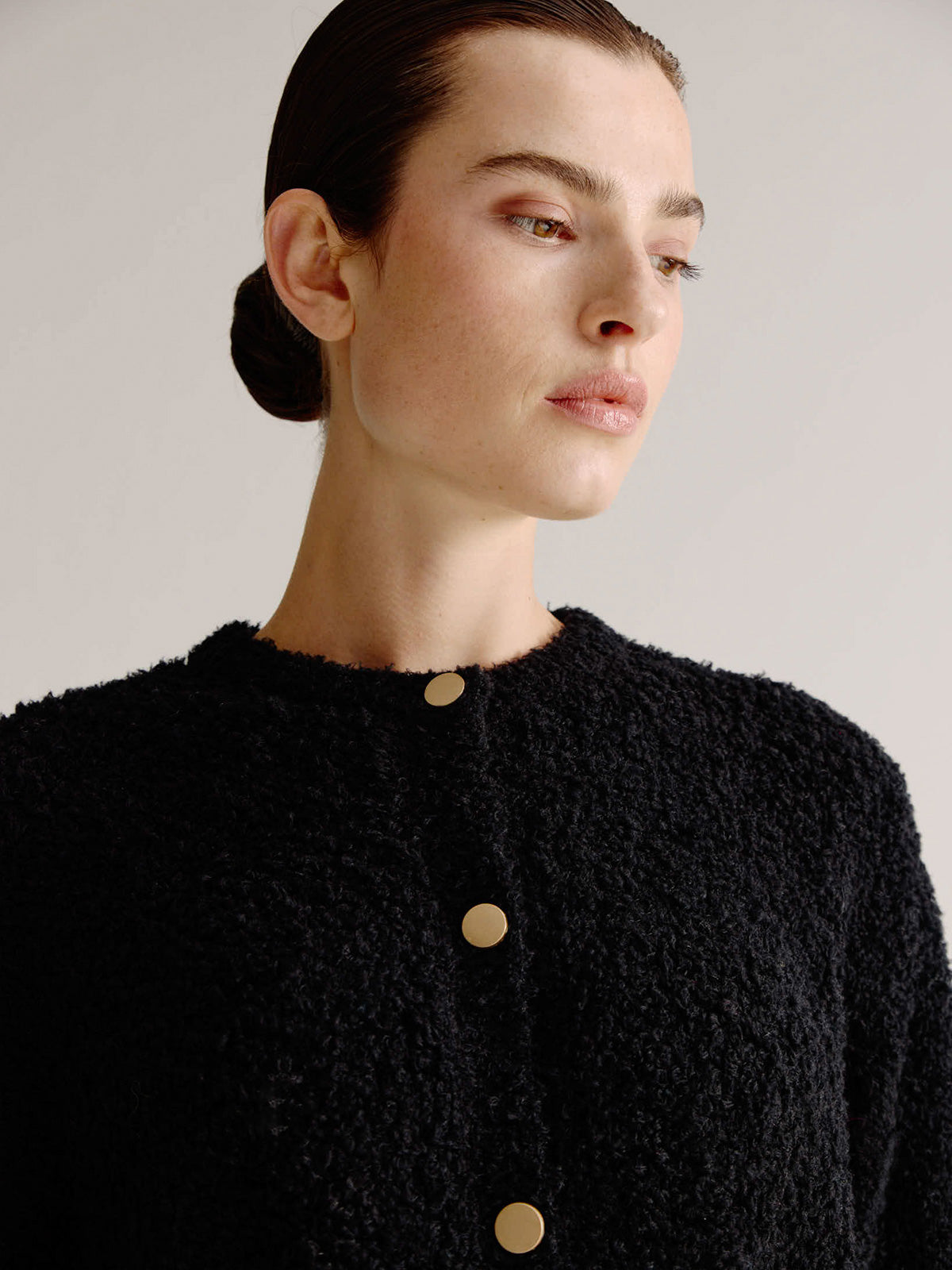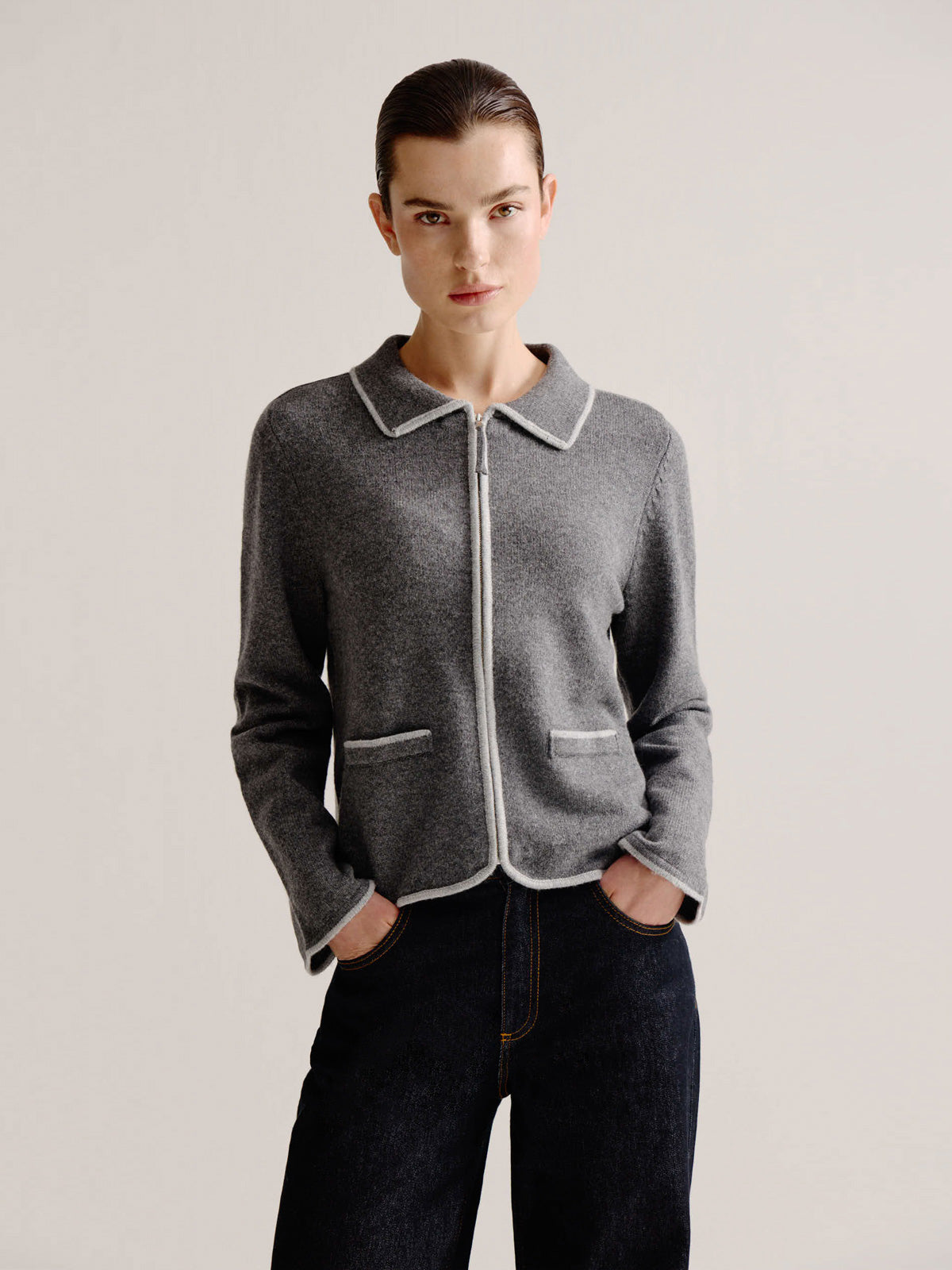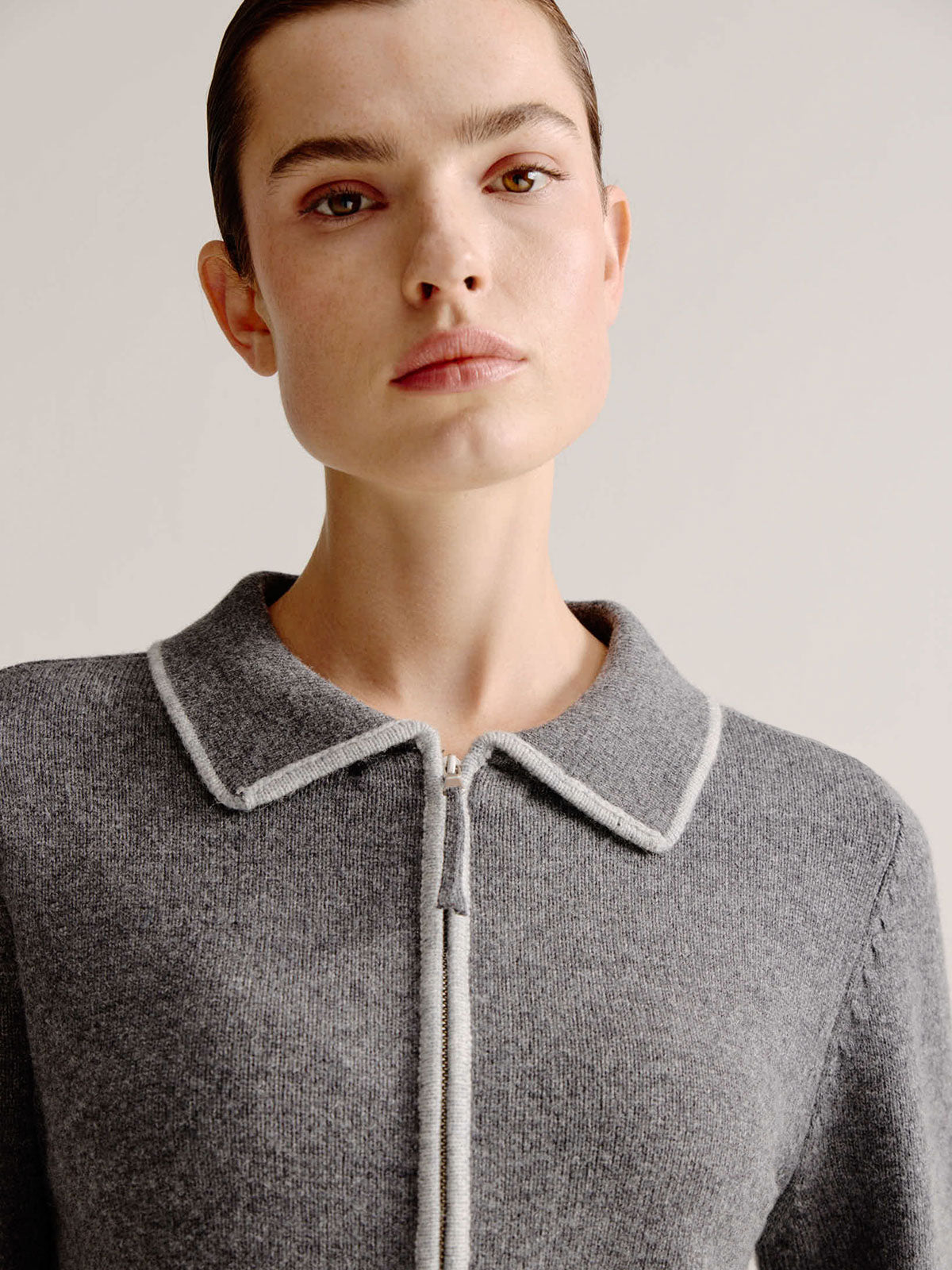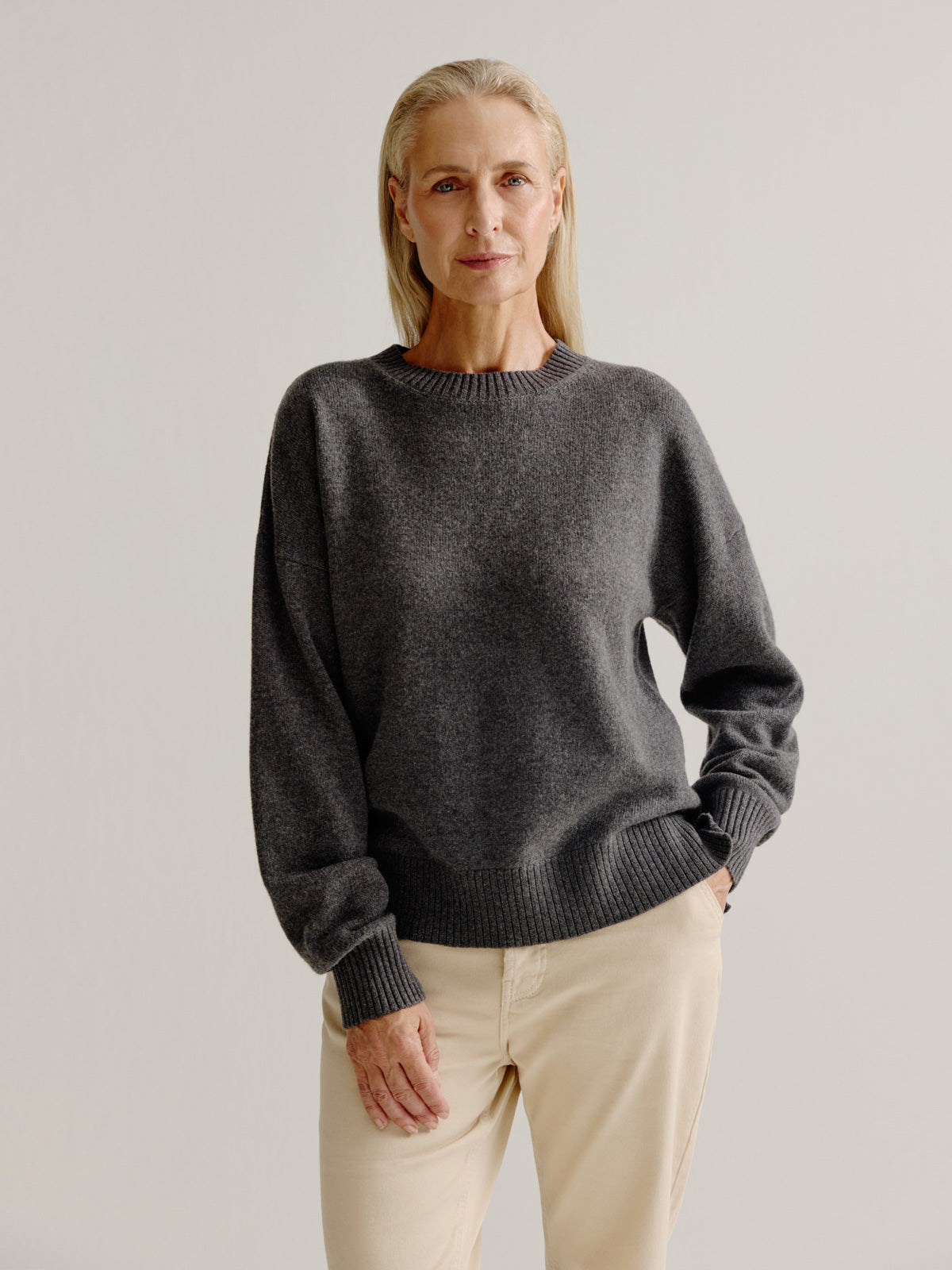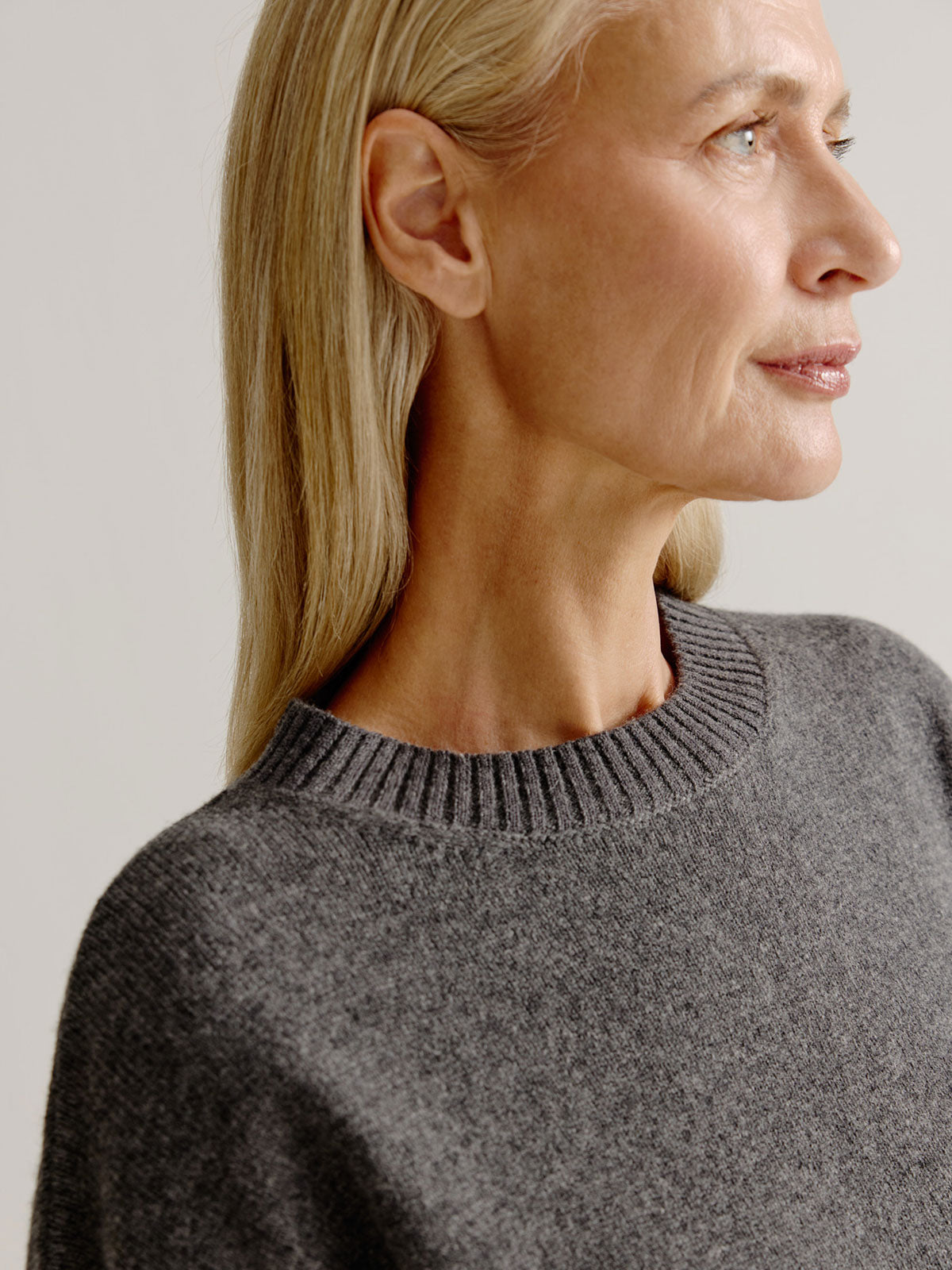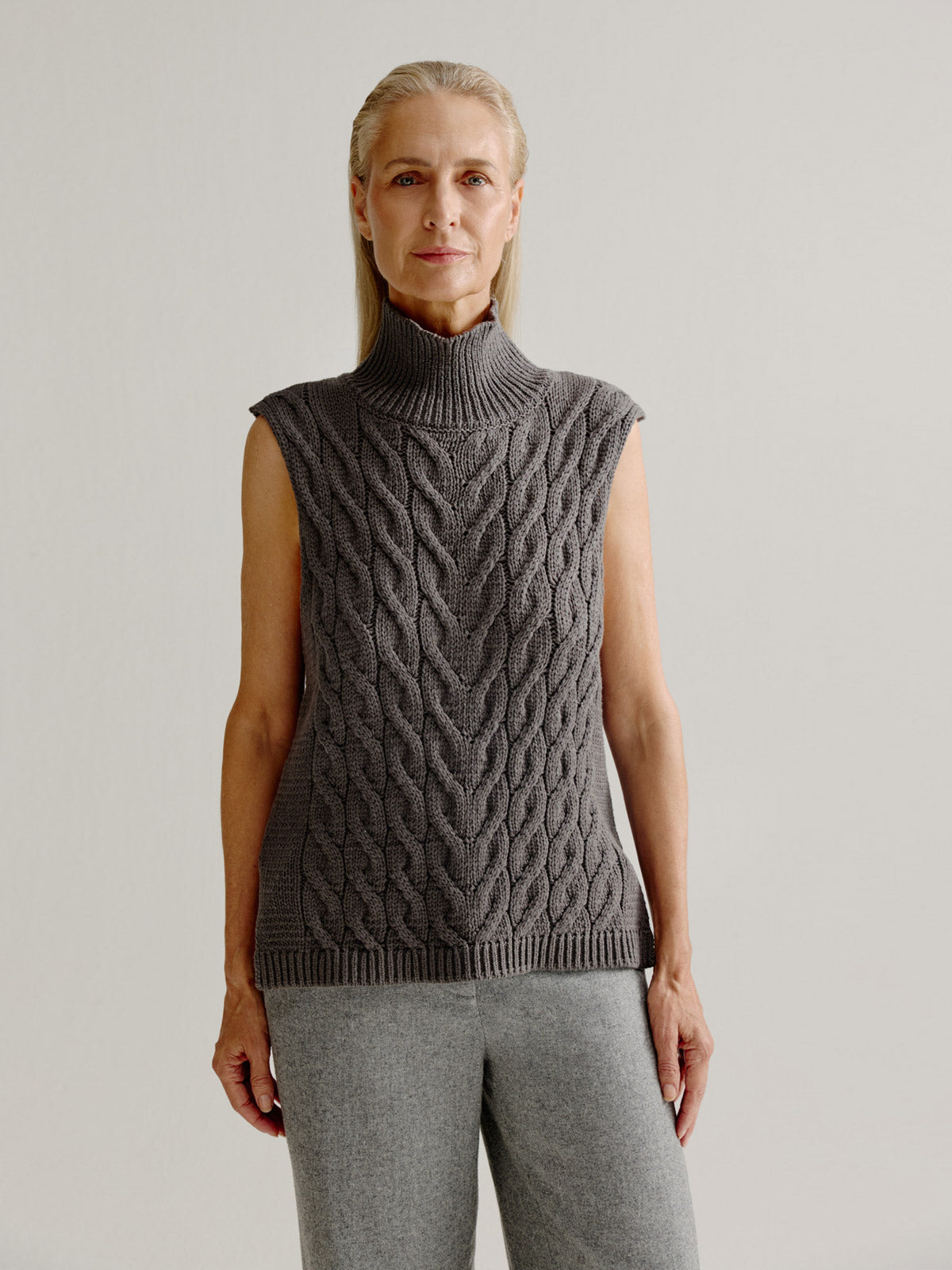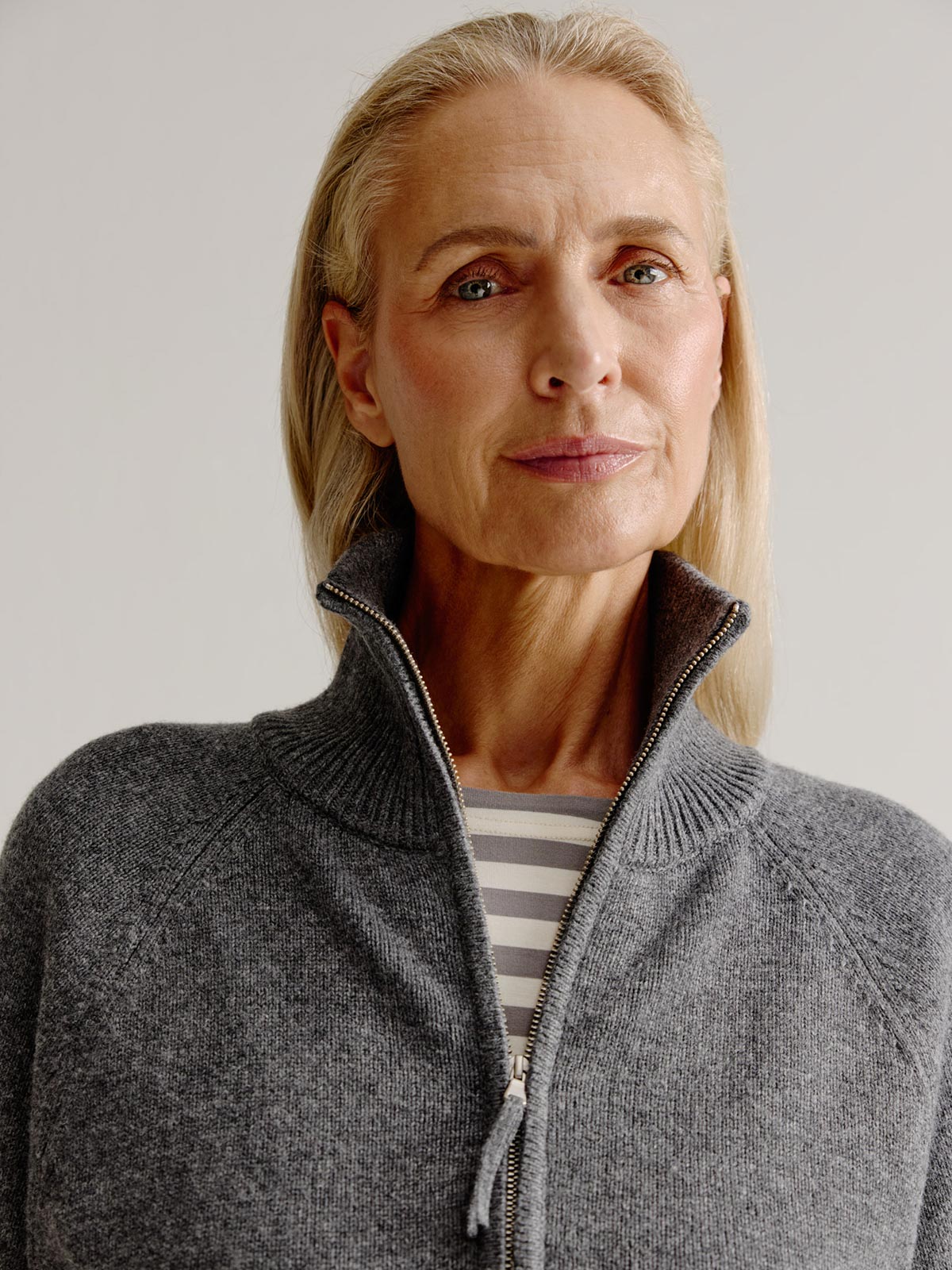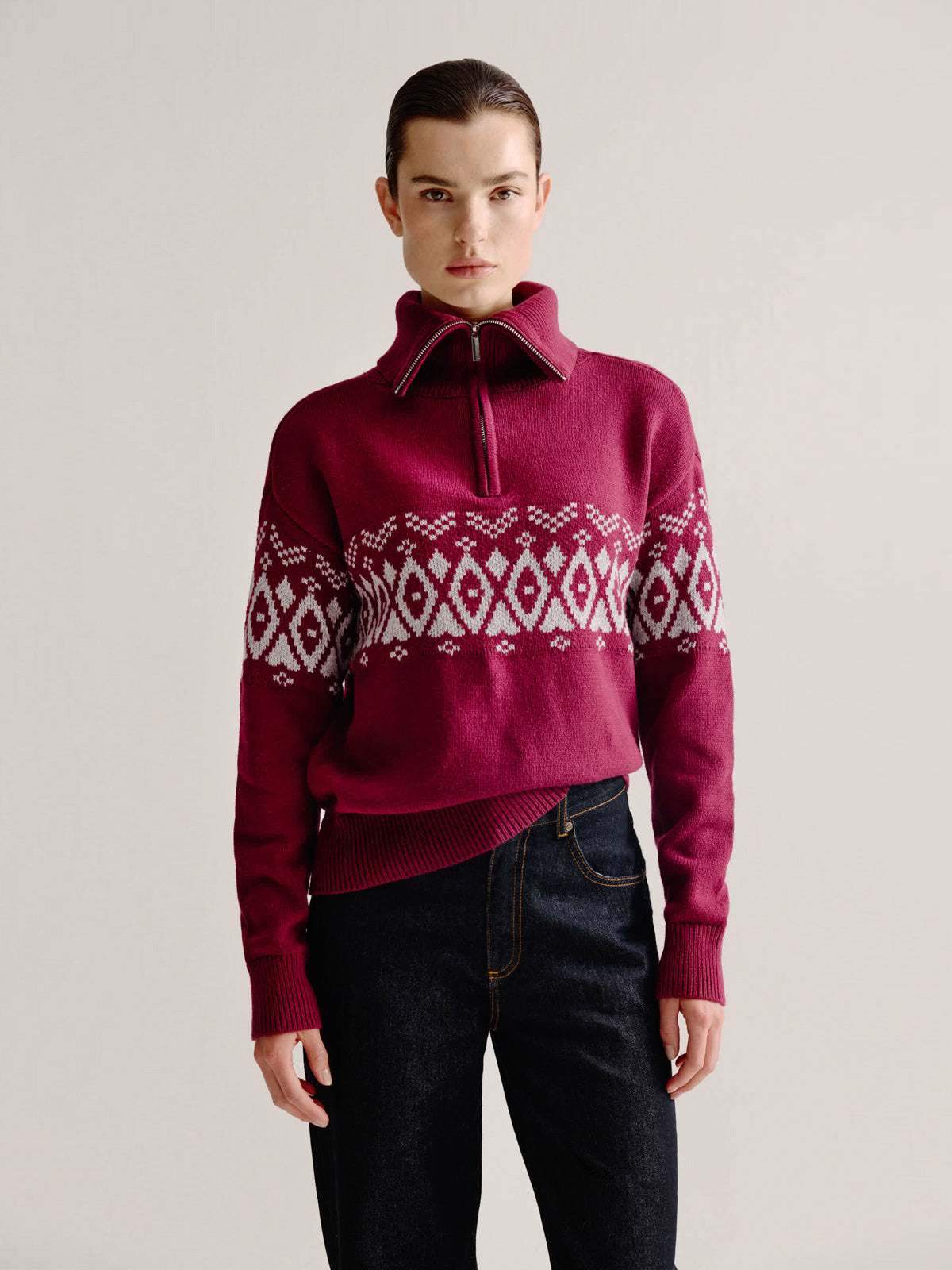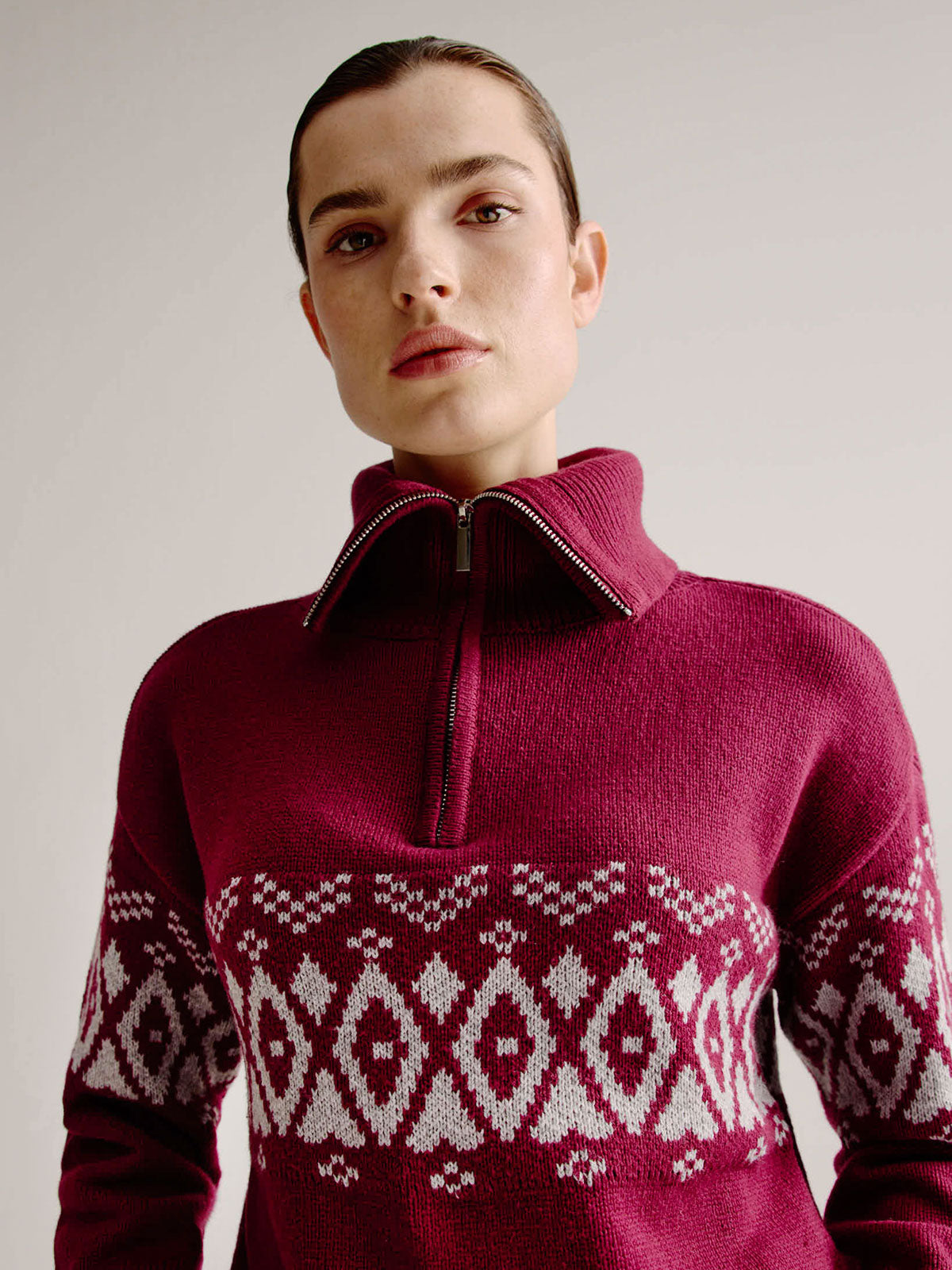Wool is a 100% natural animal by-product, offering humanity life saving 'body protection' since early prehistoric times. Over the centuries evolved from a live saving survival outfit to luxury fashion product, wool plays an essential role in today's wardrobe. Woolen sweaters and cardigans, woolen jackets, woolen blazers and woolen pants or skirts: woolen garments are widely available in all types and styles - regardless passing trends, fashion preferences or even seasons. It’s a well-kept secret that wool, due to its insulating benefits – preserving both warmth and coolness - is perfectly suitable for the warmer months as well.
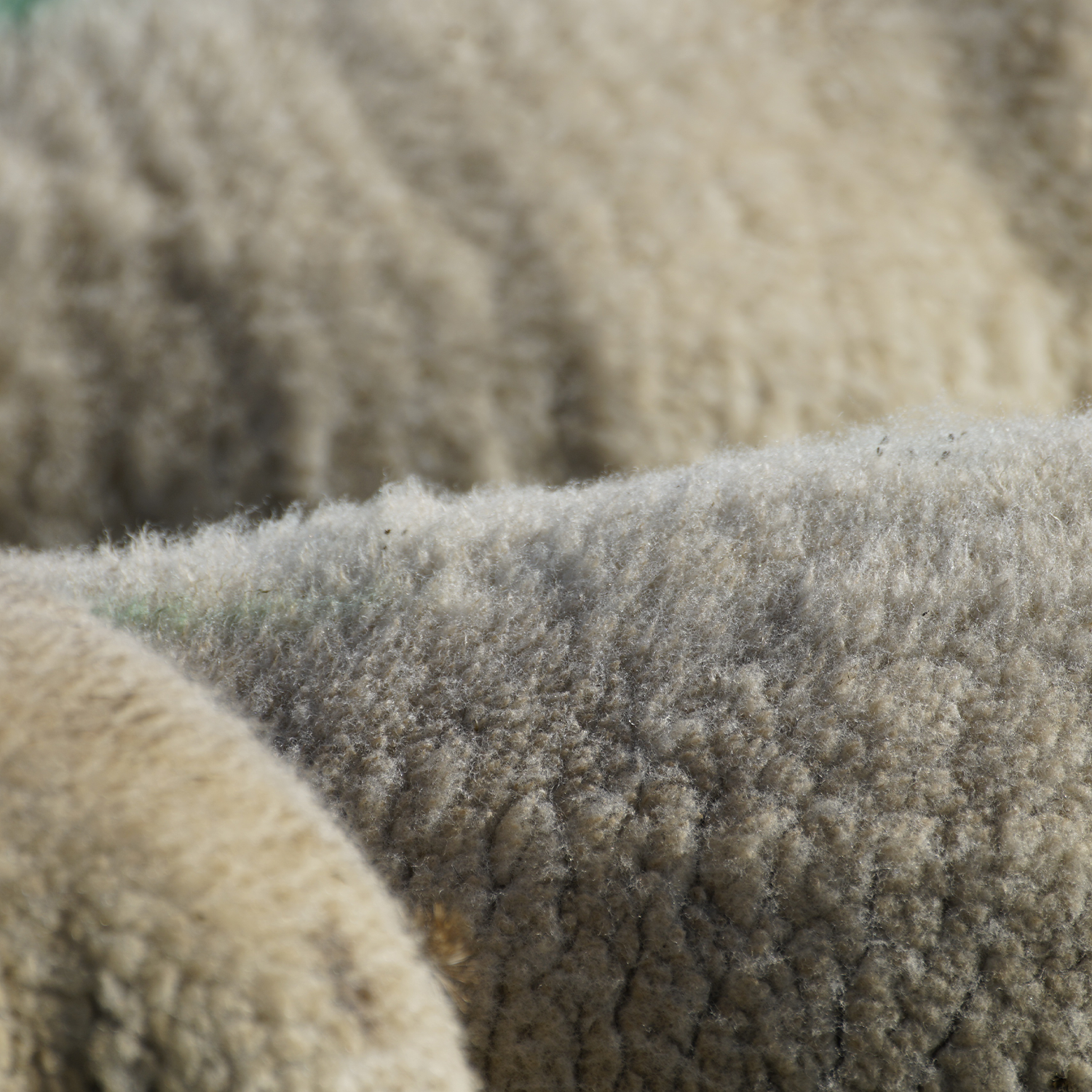
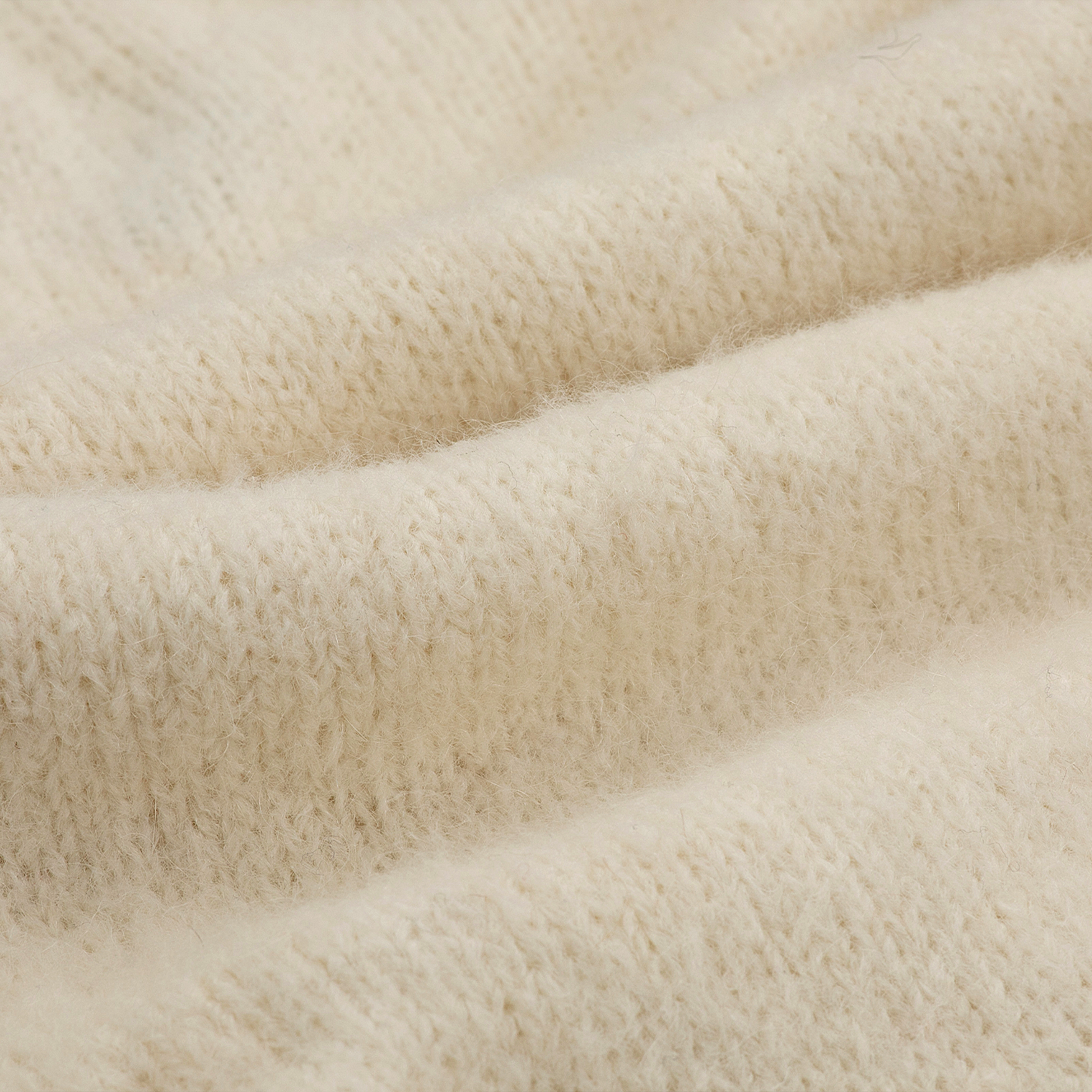
WHAT MAKES WOOL SPECIAL?
Wool’s excellent suitability for for fashion garments is rooted in a bunch of signature benefits, as listed below.
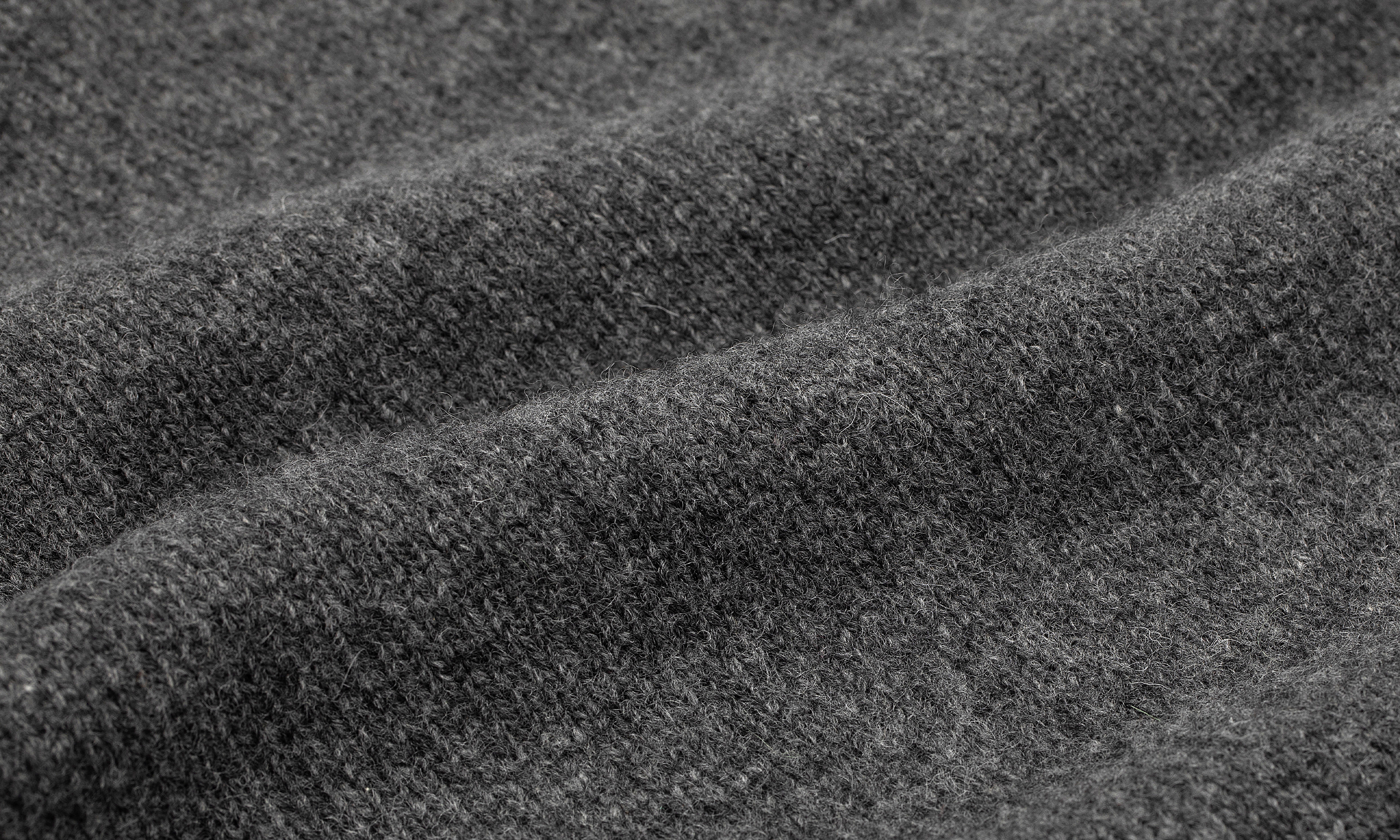
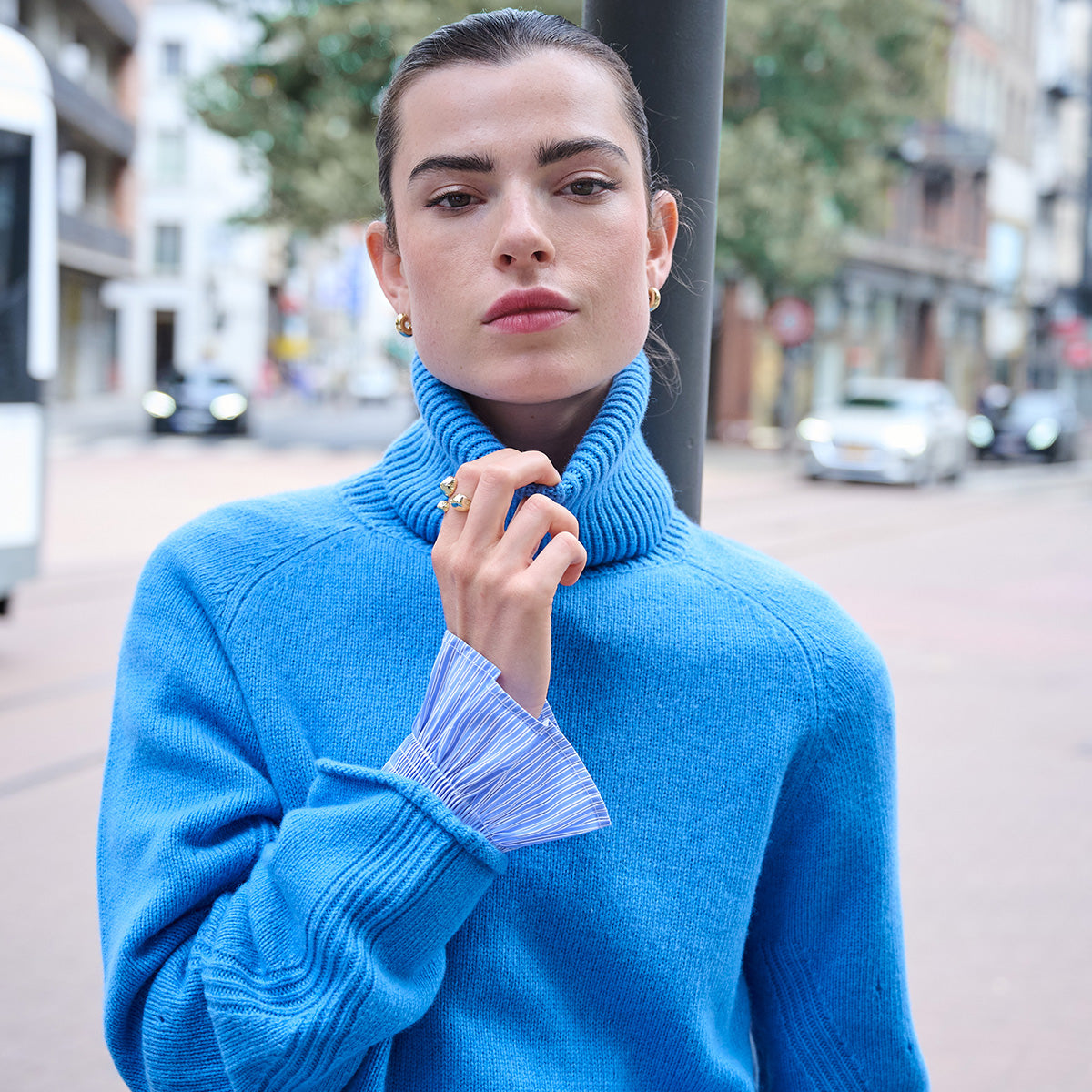
Wool is...
✓ Breathable
Wool is highly breathable, wicking away excess heat and moisture for comfortable wear.

Wool is...
✓ Absorbing
With the ability to absorb up to 30% of its weight in moisture, wool keeps skin dry and comfortable.
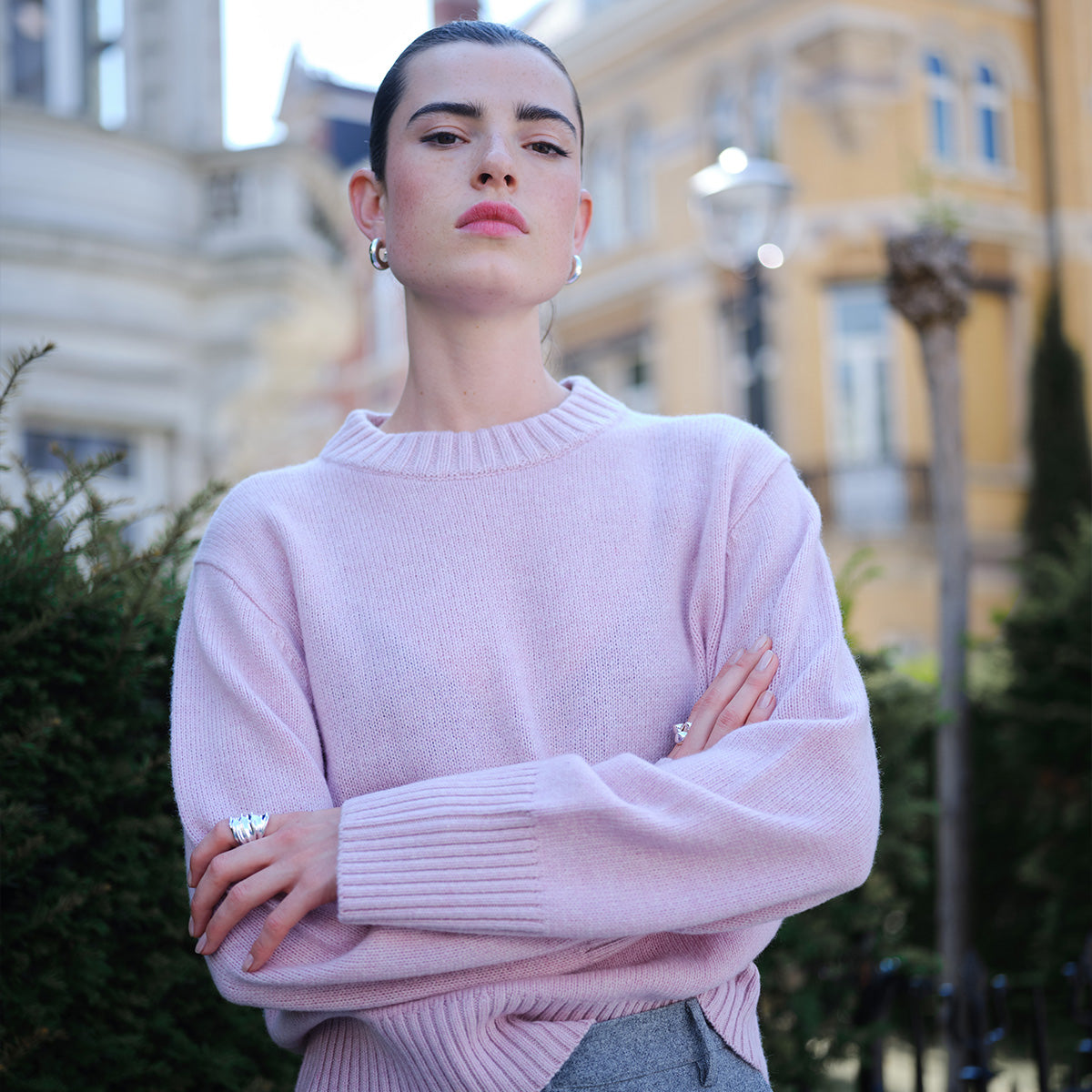
Wool is...
✓ Insulating: warm in winter, cool in summer
Wool provides excellent insulation, keeping you warm in winter and cool in summer due to its natural temperature-regulating properties.
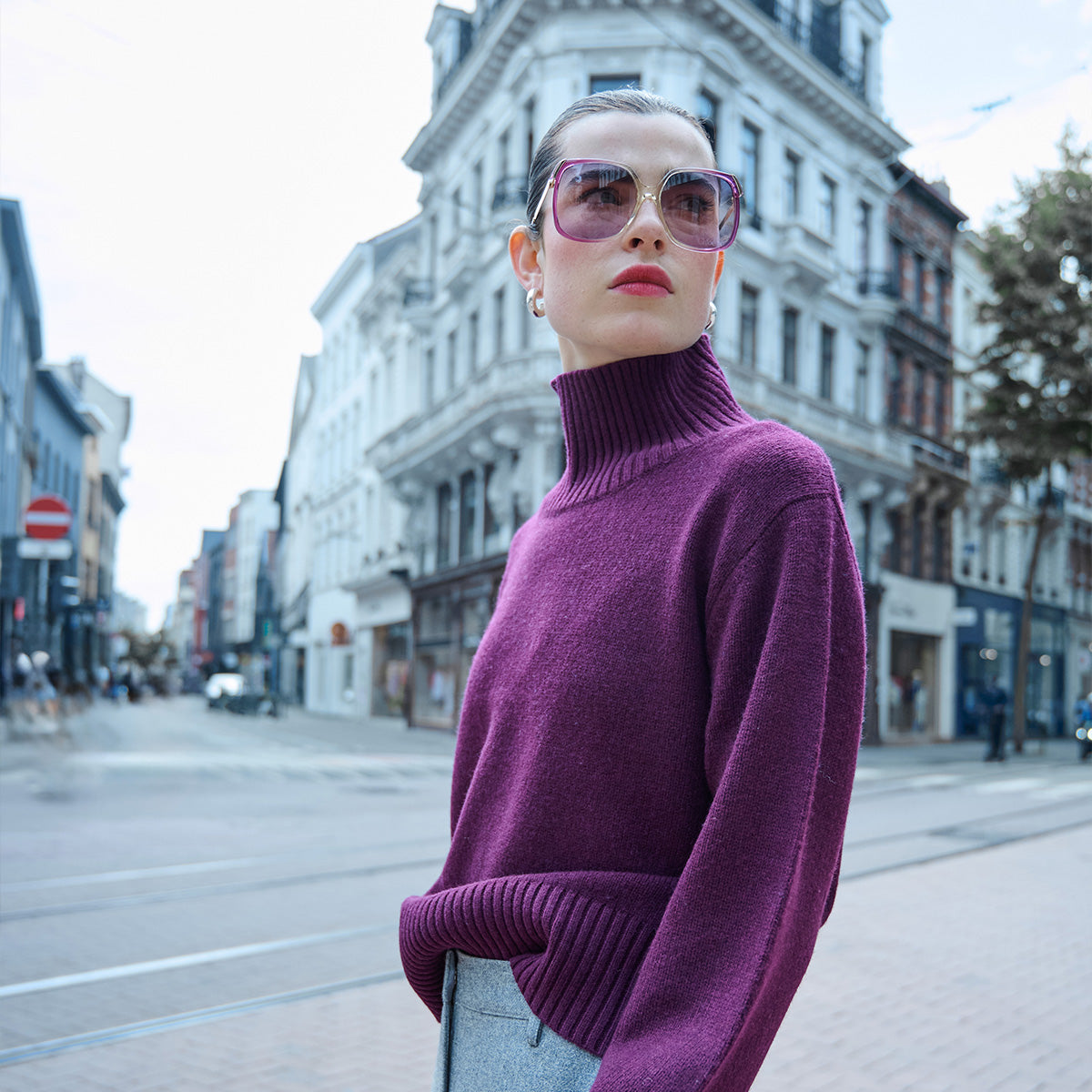
Wool is...
✓ Shape-retaining, resilient, slightly elastic
Wool maintains its shape well, rebounds quickly, and offers slight elasticity for enduring garment integrity.
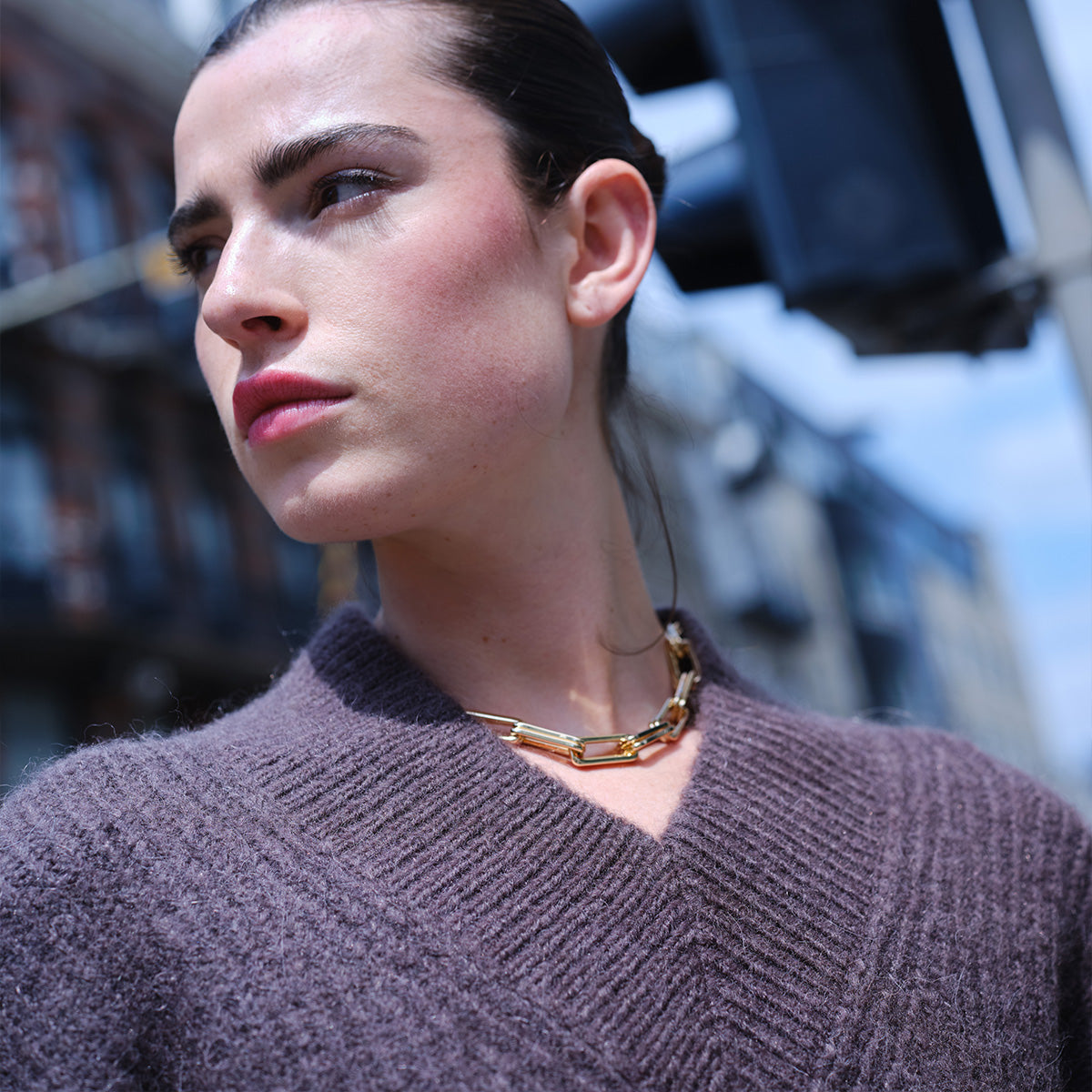
Wool is...
✓ Dirt-repellent
Naturally resistant to dirt, wool requires less frequent washing and stays fresh longer.
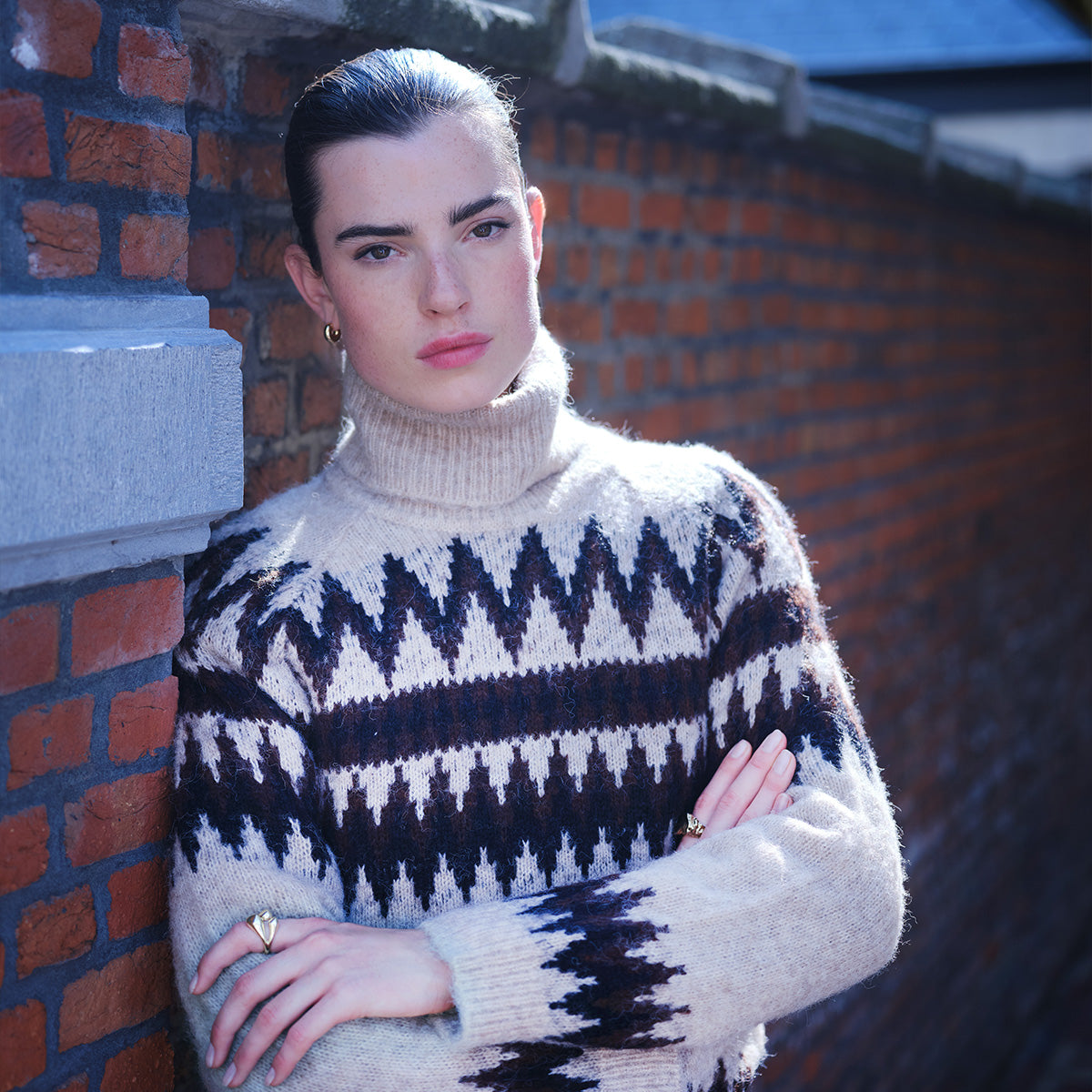
Wool is...
✓ Antibacterial, mildly self-cleaning
Wool's antibacterial properties reduce odor retention and benefit from self-cleaning through air circulation.
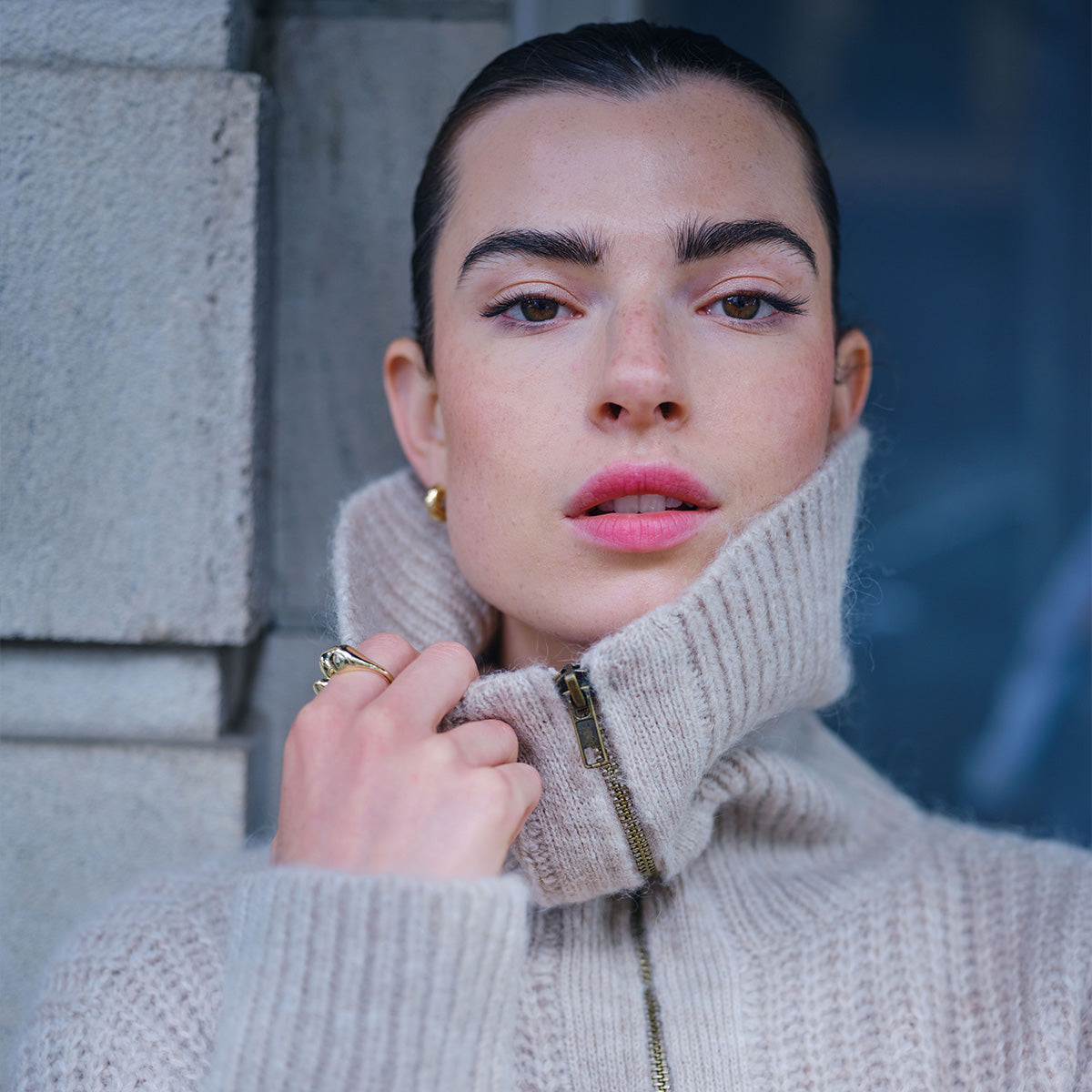
Wool is...
✓ Fully recyclable & biodegradable
Wool is a sustainable choice, being fully recyclable and biodegradable, contributing to a cleaner environment.
Each type of textile brings its own unique character, including pros and cons. Wool is less easy to wash than cotton and viscose, to name a few, but by following some simple rules to prevent felting, deformation and shrinking, washing wool is perfectly doable. Also, though sensitive skin types may not tolerate every single type of wool, certain types of wool don’t irritate or itch while its natural lanolin oil even nourishes the skin.
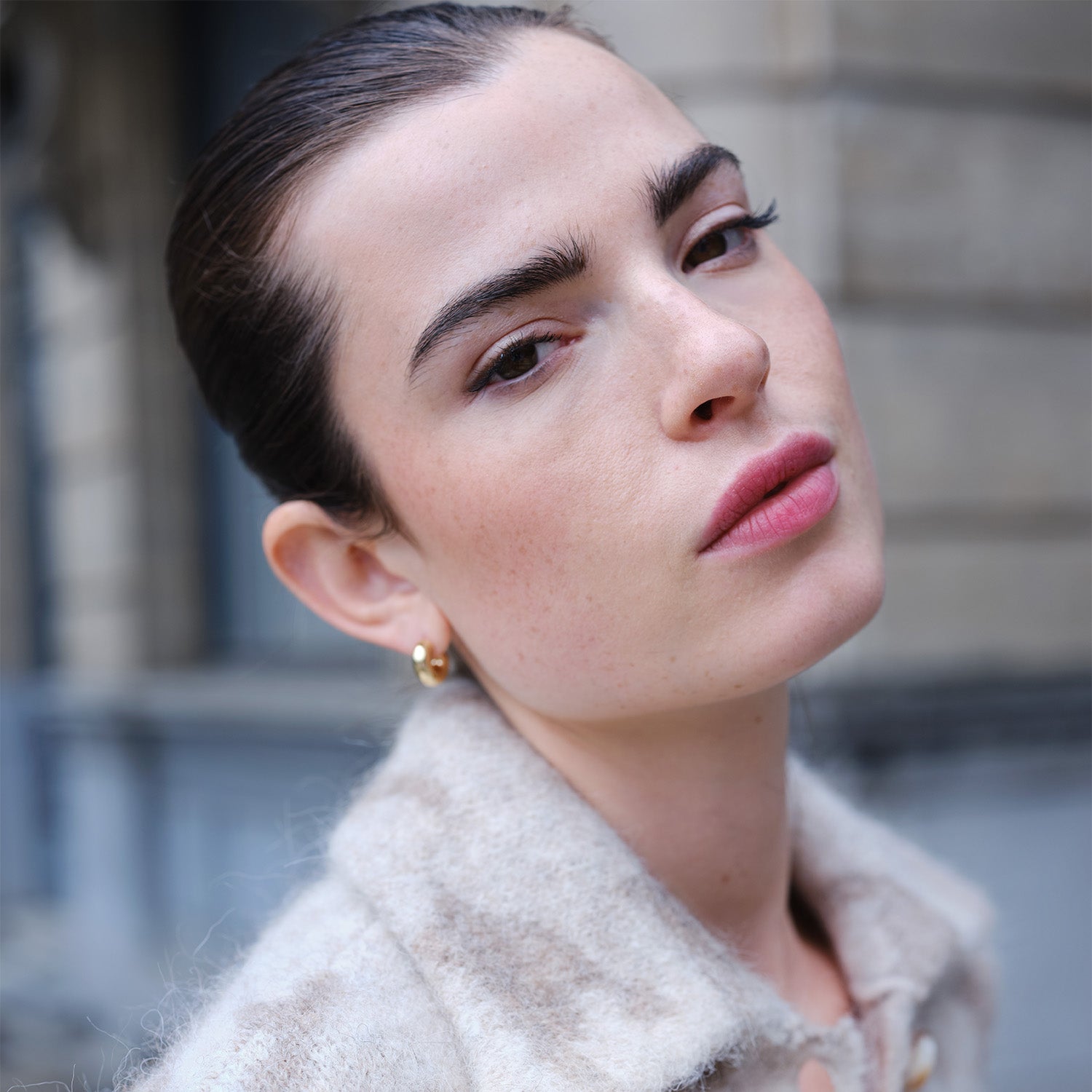
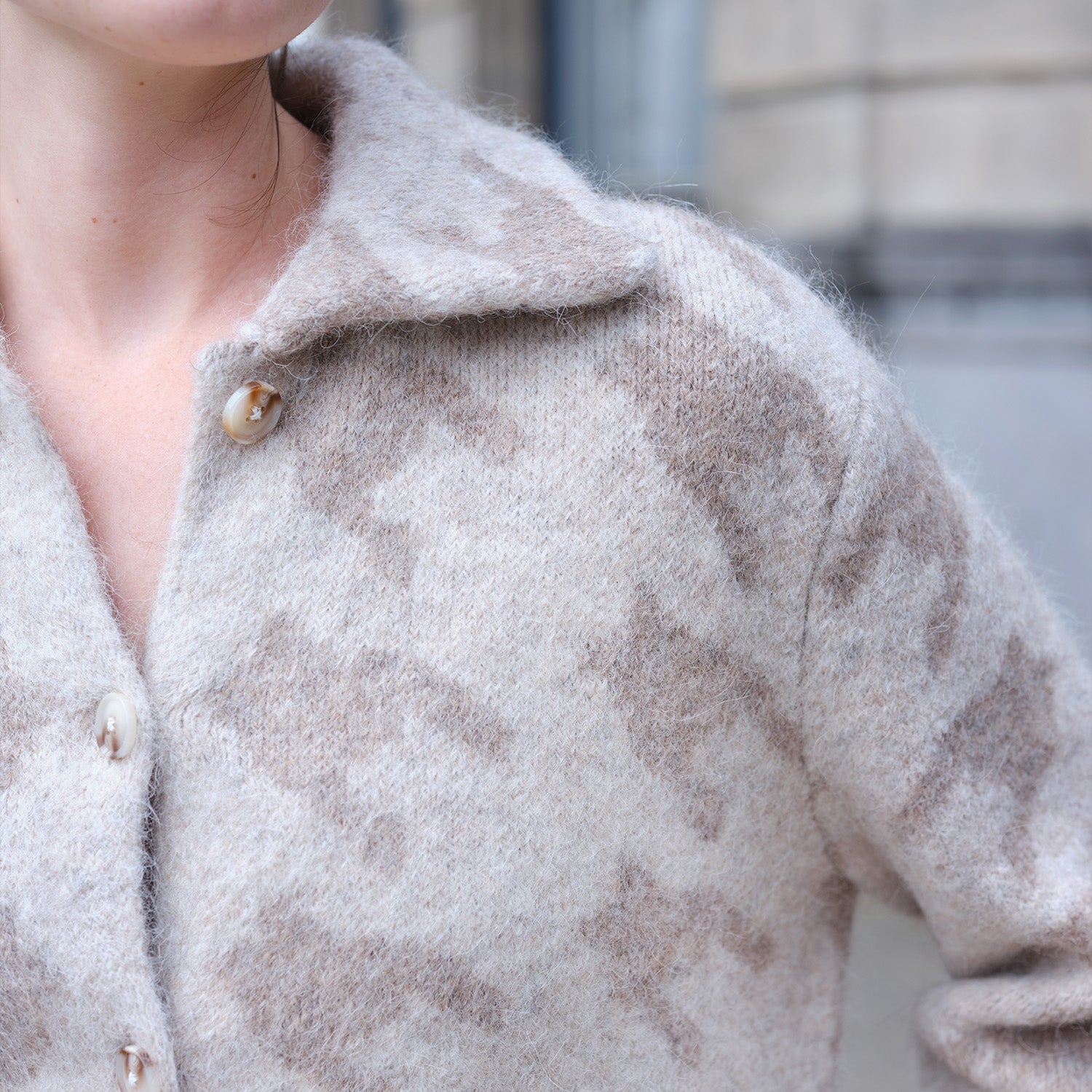
WHAT IS WOOL?
Wool is an umbrella name for the individual hairs from the fleece of sheep and goats, the breed and specific bodypart from which the wool is harvested determining the type of wool and its specific characteristics.
After harvesting (by shearing or plucking), the wool is sorted, cleaned, combed and sorted by fiber length. The longer and thinner the fiber, the softer the final weaving or knitting yarn. The degree of frizz and curl also makes a difference: frizzy wool fibers result in a 'fuller' or fluffier yarn while the weight remains relatively low.
As an animal by-product, wool is 100% natural and sustainable, however cultivating and harvesting the wool in an animal-friendly manner remains a point of attention. Fortunately, a growing number of wool types nowadays come with an RWS (Responsible Wool Standard) certification. This means that every link in the chain, from farmer to wool seller, meets strict requirements in animal welfare, environmental aspects and working conditions.
POPULAR TYPES OF WOOL EXPLAINED
Merino wool
Merino wool is a skin-friendly, non-itching type of wool with a refined frizz. When incorporated into knits, merino wool shows a relatively smooth and neutral texture. As a bonus, merino wool is easy to maintain. Excluding stains, merino wool doesn’t necessary need to be washed at all: an hour or so airing in a damp (indoor or outdoor) environment refreshes your merino wool garment while eliminating possible odours at the same time.
Alpaca wool
Alpaca wool is an ultra-soft and ultra-fluffy type of wool, well tolerated even by the most (wool) sensitive skin. The fine fiber is frizzier than average, providing alpaca wool with great insulating benefits. Garments made from/with alpaca wool look rich and feel lush without being heavy in weight. Sustainable advantage of alpaca cultivation: unlike sheep and goats, alpacas are non-ungulates with soft feet that don’t disrupt biodiversity and soil life.
Baby alpaca wool
Baby alpaca wool, opposed to what the name suggests, doesn’t originate from baby alpacas: it’s the finer hair that is hidden under the top coat of full-grown alpacas. Baby alpaca wool is even softer and finer in structure than regular alpaca wool.
Mohair
Mohair is the fine hair of the Angora goat species (not to be confused with the Angora rabbit). The fibers are longer and show a silky sheen; knitwear made from/with mohair can be recognized by a top layer of soft hairs, adding a chic and fuzzy appeal. The excellent absorbing benefits create the additional advantage that dying pigments sink in well, adding intensity and depth to the colours. Mohair is lightweight and less prone to pilling.
Kid mohair
Kid mohair is harvested from young Angora goats, making it even softer and lighter than regular mohair.
Cashmere
Cashmere is considered one of the most luxurious wool types. Cashmere is ultra soft, light, insulating and non-itchy: it can be worn directly on the skin. Cashmere comes from the cashmere goat, of which only the undercoat - harvested just once a year - is used. Its therefore limited availability, paired to a superior luxurious appearance, explains why cashmere is relatively expensive.
Yak wool
Yak wool is a relative newbie in contemporary fashion. Unlike more common wool types, yak wool doesn’t originate from sheep nor goats: yak is a cattle species that occurs exclusively in the highlands of Tibet, making yak wool highly exclusive and sought after. Thanks to its long and fine fiber, yak wool is superiously soft and light, creates little to none itching and is less prone to pilling.
Lambswool
Lambswool comes from sheep up to 6 months in age. Compared to adult sheep wool, lambswool is softer and finer in texture, making it ideal for fine gauge knits with a light and supple handfeel.
Seawool®
Seawool® is a newly developed alternative for genuine wool, pairing sustainable efforts to a perfect match with consumer ‘wants & needs’. This innovative and sustainable alternative to 'animal' wool is made from PET bottles and oyster shells, both post-consumer waste products originating from the sea – hence the name. Featuring benefits corresponding for 99% to genuine wool, Seawool® is a fashion newbie that should not be underestimated. Everything you need to know about Seawool® can be found here.
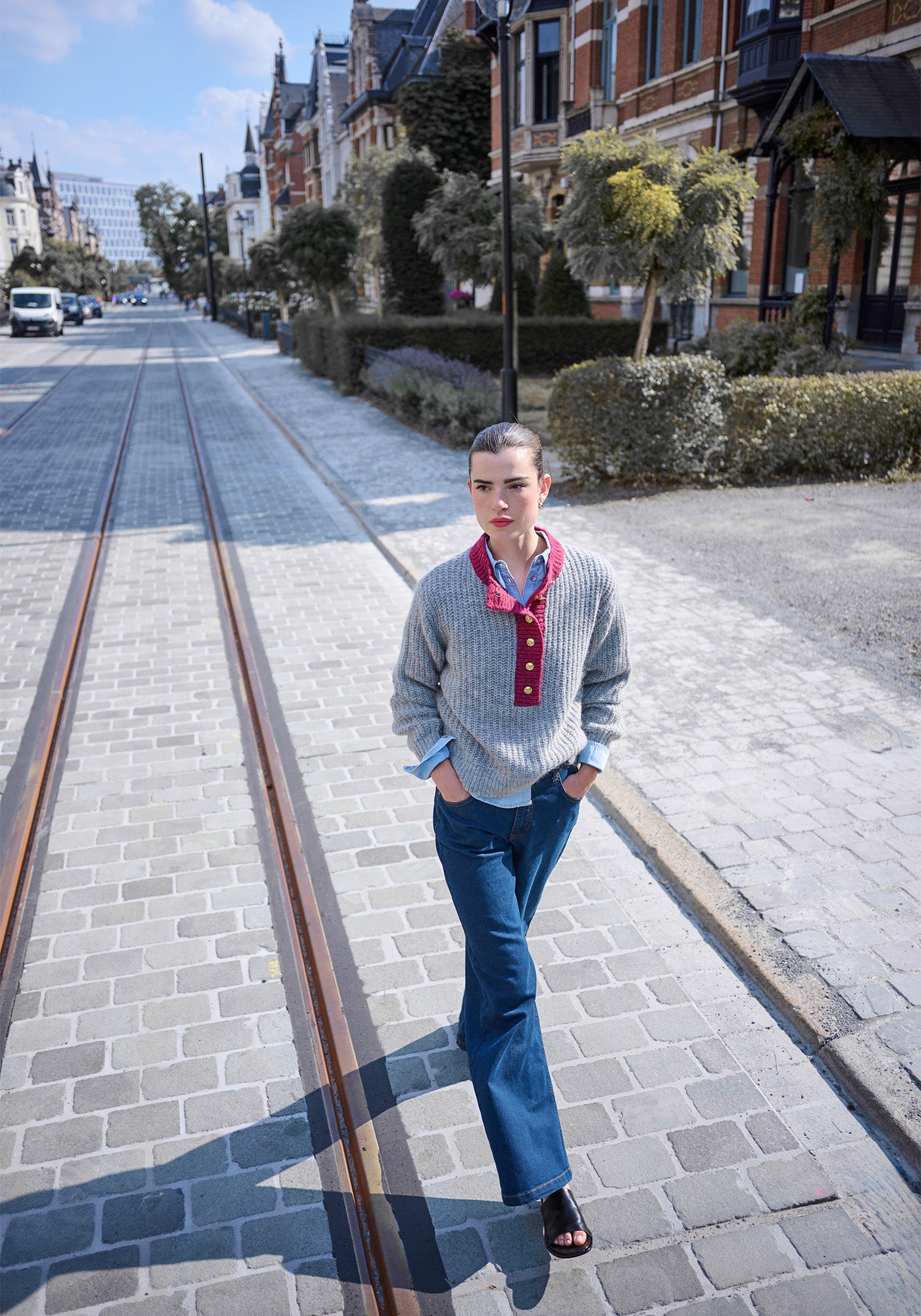
WOOL – FASHION’S SOFTEST TOUCH
Wool fibers are spun into yarn, yarns are woven into fabric or knitted into garments. Each type of fabric and each type of knit brings its own character. Fine or coarse, smooth or fluffy, matte or shiny, plain or striped, textured, brushed... it's all about the right look, as fashion and style are constantly in motion. This is why a growing number of items in the Josephine & Co webshop come with a click & learn link that takes you directly to a text explaining the ins & outs of fabrics and knits. We love to see you confidently and well-informed enjoying your ultimate fashion find or timeless new forever piece by Josephine & Co.


